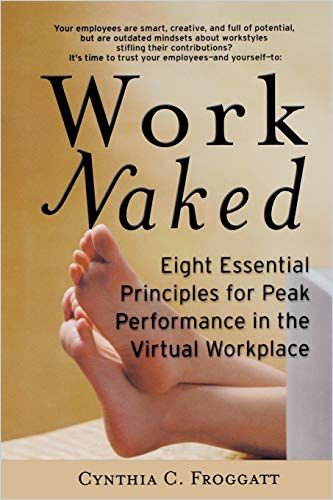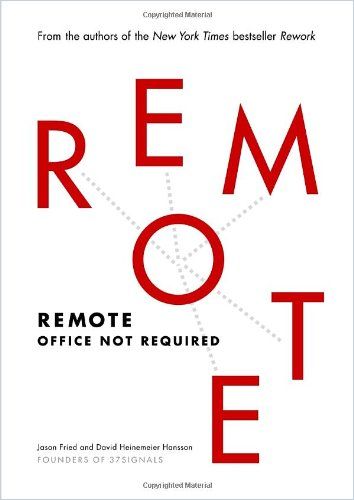How to Remain Professional at Your Home Office

If it’s about clever business advice, no one is fooling our library so quickly. But this week our colleagues at The New Yorker published a piece that we recommend to everyone who works from home now and then, and also to their superiors: How to Remain Professional at Your Home Office.
We laughed, and we hope you laughed too. But, well, what really helps with the organization and self-organization of home office? Here is our attempt to compile the five most important secrets from our library.
“Yes, boss, one can be as productive working naked as in business attire!”
For years, management has enforced a routine that requires workers to commute to an office location where they work for eight or more hours a day, five days a week. In fact, this is not the most productive routine for everyone. Remote work improves employees’ lives and saves companies money, while offices, in fact, are “interruption factories” that hinder worker productivity. There is plenty of evidence that the home office really does unleash individual potential – especially when it comes to knowledge work, which in service economies is and will be the central part of value creation.
If you are an employee and do not yet have a home office, but need arguments for it, you will find them in Work Naked by Cynthia C. Froggatt. For the next discussion with your supervisor, the following three facts will help you:
a) The traditional nine-to-five office schedule wastes time and limits potential.
b) Remote work eliminates stress, which increases productivity.
c) Remote work doesn’t cause communication problems – it makes existing issues more apparent.
Set up your own office!
There is a reason why people who have “taken a break for the family” look forward to the office again at some point – because the principle at work is that you do it best if you are not constantly distracted. This also applies to your own four walls! That’s why you should make sure that you won’t be disturbed by the children, the cleaning lady, the dogs, or your Roomba® during home office hours. To do so, designate a space in your home as your office and discuss clear rules for any interruptions with your family and/or friends. Work only when you’re in your office. And on the other hand: Don’t check work emails when you’re with your family. More useful advice on the right setup can be found in Remote by Jason Fried and David Heinemeier Hansson.
Remember: Your home is first and foremost your home – and while your company at least partly pays for cleaning and tidying up in the office, you have to do it yourself at home (because your Roomba® won’t reach the desk). So, sort through and reduce piles of paper and stuff by using a four-box sorting system. The boxes are: “Out” (garbage), “Route” (to send to someone else), “Doubt” (to be determined, but fast) and “Sprout” (for items you want to work on later). For more ideas on how to organize your new office, ask Don Aslett, owner of one of the largest cleaning firms in the US and author of The Office Clutter Cure.
Set up a schedule!
As a responsible employee, you need to be sure what works best for your lifestyle and what allows you to work when you are most productive – be it morning or night. So, use the time you set aside for work in the most efficient manner possible. Also, protect your off-work time and use it to recharge. Learn to say no when co-workers want something from you during your time off. Always keep in mind: Remote employees’ and in-house employees’ working hours must have some overlap. For maximum productivity, remote workers should establish a routine and check-in with their colleagues regularly by phone and schedule team get-togethers every few months.
Be strict with yourself and make sure you are available when you need to be – but at scheduled times and not 24/7 on demand. For more advice, read our summary of The Complete Guide to Working on a Remote Team by Megan Berry.
Set up a good connection!
Let’s be clear on this one: In your home office, you can only be as good and as fast as your connections. Sure: Tasks that take longer and for which you have enough time can still be sent with your 56k modem or by stagecoach – but usually working time also means availability, and if you work in a team you should be able to react quickly to questions, suggestions and new tasks. So, keep the lines of communication open using emails, instant messages, and chat.
The right equipment depends on your business and your type of home office. In Managing the Telecommuting Employee, Michael Amigoni and Sandra Gurvis explain how to identify the right tools and how to set them up in a productive way.
Don’t you ever get lonely!
Congratulations, you are now able to work from home! Most people work there alone. And you know what? There is a reason why the image of the lonesome cowboy riding towards the sunset has been out of fashion since the 1970s: Although legend traditionally reveres the “triumphant individual,” many historic breakthroughs have been achieved by group effort. So make sure to maintain the necessary exchange. In Organizing Genius, Patricia Ward Biederman and Warren Bennis explain how it works. And although the book was written before the boom of remote working, their advice works in an environment that relies on more flexible office models, too.
Next Steps
Check out our channels on Virtual Teams and Teamwork.












